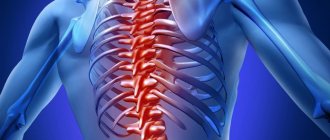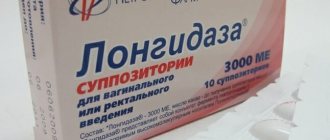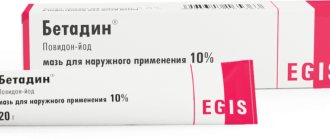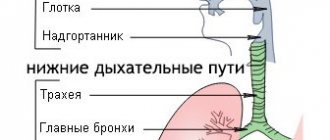Magnetotherapy is a method of physiotherapeutic treatment using the influence of a constant, alternating or traveling magnetic field on the body.
At the Yusupov Hospital, procedures are performed using modern stationary and mobile magnetic therapy devices. Doctors at the rehabilitation clinic take into account the presence of indications and contraindications for prescribing magnetic therapy to a particular patient.
What is magnetic therapy
Magnetotherapy is a procedure from the section of physiotherapy, which represents the directed effect of magnetic fields on the body. Used for therapeutic and prophylactic purposes to increase energy levels and the body's immune defense system. The technique is easy to use, has a small number of contraindications and low cost.
Magnetic therapy, the indications and contraindications of which are actively used to this day, became known in the first centuries of our era. This procedure was first carried out in the ancient world in Asian countries. Stones found near the city of Magnesia were used in folk medicine to have a beneficial effect on the human body.
In Tibet they were used as an activator of brain activity, in Egypt - a fountain of youth, in European countries as an anti-inflammatory device. Since ancient times, accessories, bracelets, pendants and other jewelry have been made from magnets. Such jewelry contributes to a general beneficial effect on the body and does not require restrictions on time and place of wearing.
The magnet is divided into 2 types: permanent and variable, in which a high-frequency and low-frequency subtype are distinguished. Magnetic therapy is also divided into 2 types: general and local effects. The general procedure covers the body as a whole, while the local one is aimed at a small area of the body.
The beneficial therapeutic effect is achieved due to the directed action of the positive (south) and negative (north) poles on the patient’s body.
Devices for conducting magnetic therapy sessions
Various devices are used to carry out the procedures:
- stationary OMT devices;
- portable devices;
- jewelry with magnets and magnetic accessories.
Each device has its own differences and is endowed with specific functions. For superficial diseases, it is more convenient and expedient to use portable devices that are mobile. More serious systemic diseases are treated with stationary equipment. Jewelry with magnets is indicated for maintaining health, preventing diseases and for minor pathologies.
The effect of a magnet on the body
The effect that magnetic therapy has on the body is due to the influence of magnetic fields. They can bring both benefit and harm to a person. The impact of fields on the body can be beneficial only with complex treatment.
Magnetic therapy is an auxiliary procedure and is prescribed only by a doctor. The magnetic field is generated in a continuous or discontinuous form, in a pulsed technique with a variety of frequencies, shapes and lengths of signals.
Effect of a magnet on the human body:
- Increasing the rate of blood circulation, as a result of which tissues and organs are supplied with nutrients and oxygen.
- Acceleration of protein absorption.
- Correction of hormonal production.
- Normalization of lymph distribution, as a result of which swelling subsides and the inflammatory process in tissues decreases.
- Increased regenerative capacity.
- Reduced pain.
Each pole of a magnet has a specific effect on the body.
Consequence of the influence of the positive pole:
- Relieving the sensation of pain.
- Action against inflammation processes.
- Blocking the development and growth of pathogenic bacteria.
- Alkaline exposure.
- Reducing acidity levels in the body.
- Sedative effect.
- Promoting the breakdown of adipose tissue.
- Stop bleeding.
- Increasing the elasticity of the walls of blood vessels.
Consequence of the influence of the negative pole:
- Increased body tone and energy.
- Increased level of performance and mental activity.
- Acceleration of the growth of pathogenic bacteria (therefore, the procedure with exposure to the north pole is contraindicated for infectious diseases).
- Increased acidity level in the human body.
Magnetic therapy - who is indicated and who is prohibited?
Physiotherapy methods involve the influence of physical factors, both natural and artificial, on the human body. This could be heat, electricity, pressure, massage, etc. One of the frequently used approaches is magnetic therapy, which has a multifactorial positive effect on the human condition. We suggest that you familiarize yourself with this technique in more detail and consider the indications and limitations in its use.
Magnetic therapy - what is it and what is it for?
Magnetotherapy as a method of physiotherapy refers to a type of exposure through a constant or alternating (high or low frequency) magnetic field in intermittent or continuous mode. The technique belongs to the category of alternative medicine and is used both for the treatment and prevention of various diseases.
Today there are two types of procedures:
- local - when the effect is made only on certain areas or parts of the body;
- general - allows you to achieve a general strengthening effect, provided it affects the whole body at once.
This method has been known to mankind for a very long time, but with the active development of the pharmacological market, it was partially forgotten. Today, new research has proven its positive effect, so magnetic therapy is used as a method of working with the mental and physical condition of patients.
Effect of magnetic therapy on the human body
Depending on which pole influences the patient (negative or positive), different results can be achieved. Let's consider the therapeutic effects of exposure to the negative north pole of a magnet:
- increased efficiency and energy;
- activation of mental activity;
- increased acidity levels;
- accelerating the development of the bacterial environment (for this reason, this type of influence is not produced during infectious processes).
Positive results from the action of the south pole include:
- reducing the intensity of painful sensations of any localization;
- anti-inflammatory effect;
- reducing the growth rate of bacteria;
- decreased acidity in the body;
- calming effect on the nervous system;
- destructive effect on fat deposits
- increasing the elasticity of blood vessels;
- normalization of the coagulation ability of the circulatory system.
What are the health benefits of the procedure?
The general effect on the body becomes especially important in the presence of certain problems. So, let’s find out how magnetic therapy can help with specific ailments and conditions.
Benefits for joints
The effectiveness of the effect is noted in inflammatory processes affecting the articular elements. Thus, in case of arthrosis, the technique is used as an auxiliary method to relieve pain, minimize inflammation, as well as to achieve and maintain long-term remission.
Using a magnet, in particular for arthrosis of the knee joint, you can warm up the joint itself and the muscles that surround it by a couple of degrees to a depth of 10 centimeters. As a result, circulatory activity increases, fluid outflow improves (swelling disappears) and restorative processes are launched. It is worth noting that magnetic therapy is possible only for the first and second stages of arthrosis, provided that there are no contraindications in the active phase of inflammation of the synovial bursa. At more advanced stages, the method does not give the desired result.
For osteochondrosis of the spine
This therapy has found its greatest distribution in the treatment of diseases of the musculoskeletal system. So, in the case of osteochondrosis, it can be used in combination with other methods, and as an independent procedure. The benefits of exposure to such a diagnosis lie in the following aspects:
- relief of pain in tissues;
- relieving swelling and inflammation, thereby restoring mobility;
- dilation of blood vessels, improvement of tissue nutrition and gas exchange in them, which has a positive effect on damaged areas;
- compensation of neurovascular disorders occurs;
- the processes of degeneration of intervertebral discs are slowed down.
The method can be used both during an exacerbation to relieve symptoms, and during remission as maintenance therapy.
Magnetic therapy on the lower abdomen in gynecology
A session for gynecological problems involves influencing the affected organs through the abdominal wall. If more extensive measures are required, the cavity method can be used, which involves the insertion of a special device into the vagina. They resort to this type of physiotherapy for the following ailments:
- inflammatory processes localized in the ovaries, to varying degrees of complexity;
- adhesions;
- endocervicitis;
- painful menstruation;
- inflammation of the vaginal mucosa.
In addition to the ability to fight even chronic inflammatory processes, magnetic therapy also helps to cope with pain and regulate the menstrual cycle.
The technique is also used during pregnancy. Thus, in case of disorders (preeclampsia, anemia, slow fetal development), special devices are used that, through low-frequency waves, improve blood circulation and increase the baby’s level of oxygen and nutritional components.
For fractures
Quite often, patients with bone fractures are prescribed magnetic therapy sessions. This is useful in that the procedure allows you to reduce the intensity of pain, which is quite pronounced with this type of injury. The feasibility of sessions especially increases in case of complications - malunion, the occurrence of a false joint. In addition to the analgesic effect, the procedure has a positive effect on the condition of tissues, improves nutritional processes, and, accordingly, accelerates regeneration processes.
For prostatitis
Prostatitis is an inflammatory process in the male prostate gland, which causes many unpleasant symptoms and complications. As part of a comprehensive treatment of the problem, a course of magnetic therapy may be prescribed. Completing the procedures allows you to reduce the level of pain, relieve the inflammatory process, thereby normalizing urination and improving work in the sexual sphere. Under the influence of magnetic fields, the nature of the substance produced by the prostate changes, and the type of leukocyte cells also changes - they become more active and larger, due to which they actively fight the existing problem. Achieving a positive result requires responsible treatment and completion of the entire course, both magnetic and drug therapy.
For varicose veins
The positive general influence of magnetic fields on the human body affects many processes occurring in it, including the problem of varicose veins. So, the main benefits of sessions are the following effects:
- prevention of blood clots;
- stimulation of blood circulation processes in the extremities;
- oxygen saturation of tissues;
- lymphatic drainage;
- creating favorable conditions for productive resorption of hematomas;
- relieving the inflammatory process.
It is worth considering that for this disease, magnet therapy is only a method of auxiliary influence, but not the main treatment.
What does the procedure treat: indications for use
Considering what important types of influence a magnet can produce on the human body, there are many indications for the use of such therapy. These include:
- due to the effect on the condition of the blood and blood vessels, one of the main indications is diseases of the heart and vascular elements. Thus, the benefit will be achieved with vegetative-vascular dystonia, angina pectoris, hypertension (first and second degree), arrhythmia, venous and arterial insufficiency, atherosclerosis;
- diseases of the respiratory system (the method is used for bronchitis, bronchial asthma, pneumonia in a chronic form);
- ENT diseases in chronic forms, in particular tracheitis, sinusitis, rhinitis, tonsillitis, frontal sinusitis, etc.;
- diseases of the musculoskeletal system (osteochondrosis and osteoarthritis, arthritis, radiculitis, as well as injuries to joints and bones);
- problems in the digestive tract (peptic ulcer, inflammation of the gastric and intestinal mucosa, hepatitis);
- dermatological diseases (burns, trophic ulcers, poorly healing damage to the integrity of the skin, frostbite, psoriasis, dermatoses, bedsores, etc.;
- genitourinary problems in men and women (prostatitis, urethritis, inflammation in the uterus and ovaries, urolithiasis, pyelonephritis);
- disorders of the nervous system, in particular sleep problems, chronic fatigue and stress, neuralgia, consequences of stroke and concussion;
- Magnetic therapy is also used for the eyes as part of the treatment of conjunctivitis, glaucoma, optic atrophy and keratitis;
- In addition, this therapy has a place in the rehabilitation of patients after surgical interventions.
Harm and side effects from the procedure
Like any other method of physical therapy, exposure to a magnet does not cause direct harm to the body and is considered safe. Negative effects can occur if contraindications are ignored, there is a deliberate increase in time and number of procedures, as well as unnecessary use. Increased volumes of influence of magnetic fields lead to the fact that the permeability of cell membranes may change, and, accordingly, there will be a risk of developing degenerative processes. In addition, there is a risk of developing hypoxia.
Before undergoing magnetic therapy, the patient must undergo a test for sensitivity to this type of influence - the volume and achieved effect of the treatment will depend on this.
Contraindications to magnetotherapy treatment
Before prescribing a procedure of this type, the doctor follows the patient’s condition in detail, and necessarily takes into account his age, the presence of chronic and acute diseases, the dynamics of their course, psychological state and the results of examinations. The impossibility of implementing magnetic therapy creates the following problems:
- decreased level of blood clotting activity;
- presence of a pacemaker;
- active phase of tuberculosis;
- the presence of malignant neoplasms in the body;
- acute renal and liver failure;
- the presence of purulent processes;
- elevated temperature;
- infectious diseases at the acute stage;
- individual intolerance to magnetic fields;
- menstruation.
Use for children is possible; age up to two years is considered a relative contraindication, as well as pregnancy (at this time, the use of magnetic therapy is possible if necessary).
How to choose a device for home use
In hospital settings, stationary devices are used for magnetic therapy, but there are also numerous portable devices that allow therapeutic effects to be performed at home. A similar device for the home is selected according to various parameters, in particular: dimensions, type of fastening, continuous operation time, and the ability to select the frequency of magnetic field pulses. It is worth paying attention to the following most popular and frequently purchased models:
- Magofon-01 - used for diseases of the respiratory, cardiovascular, nervous systems, and ailments of the musculoskeletal system. It is easy to use, has the best decongestant and analgesic effect for injuries;
- Alimp-1 is suitable for patients with diseases of the joints and spinal column, cardiovascular problems, diseases of the genital area, as well as disorders of the nervous system. The compact device emits a pulsed magnetic field;
- Almag-01 can only be applied to the lumbar area, spine, and joints.
Before purchasing, the best solution would be to consult with the doctor who prescribed the procedure.
Video about the benefits of performing the procedure at home
How useful is magnetic therapy and for what diseases is it advisable to use it at home? This educational video is devoted to these questions.
The therapeutic effect of magnetic therapy
Magnetic therapy, the indications and contraindications of which are taken into account when prescribing, has a therapeutic effect on the body.
When undergoing a course of magnetic therapy, the following therapeutic effects are observed:
- Increases metabolism in the body, resulting in a correction of fat deposits.
- Improving the quality of hemoglobin, leading to the saturation of organs and tissues with a large number of oxygen molecules and nutrients.
- Promotes the removal of toxic and waste deposits due to the narrowing of lymphatic vessels.
- Reduced swelling.
- Normalization of blood vessels and nerve endings.
- Correction of the functioning of the central nervous system.
- Promoting therapeutic procedures for diabetes, inflammatory and chronic diseases.
- Increasing the ability to regenerate tissue.
- Reducing pain from fractures and chronic diseases.
- Leveling colloidal and scar tissue on cuts and suture marks.
Indications for procedures
Magnetic therapy, the indications and contraindications of which are taken into account when prescribing the procedure, is carefully checked by the therapist.
The magnet is prescribed by the attending physician when making diagnoses:
- osteochondrosis;
- diabetes mellitus type 1 and 2;
- injuries from burns, fractures, cuts and other mechanical damage to tissue;
- diseases of the heart and vascular system of the body;
- pathologies of the stomach and intestinal tract;
- disorders of blood supply and blood circulation in the body;
- postoperative recovery;
- diseases of the central and peripheral nervous system;
- hypertension;
- tuberculosis;
- lung diseases – bronchitis, pneumonia;
- diseases of dental nature;
- asthma and respiratory disorders.
Is it possible for pregnant women
Instructions for the use of magnetic therapy include instructions during pregnancy. The procedure can be prescribed by a doctor. The use of the procedure during pregnancy is possible and even indicated for use. However, magnetic therapy should be carried out in a low-frequency type and with extreme caution.
This procedure will increase the level of the body’s immune defense, improve the well-being and development of the unborn child.
Therapy is prescribed taking into account all the characteristics of the patient’s health condition and on an individual basis. During the prenatal and postnatal period, magnetic therapy is used as a preventive measure to prevent the occurrence of infectious diseases.
Contraindications
Magnetic therapy, the indications and contraindications for which have been studied in clinical settings, may be unsafe if used thoughtlessly.
Magnetic therapy is contraindicated in patients, or is used with extreme caution and in exceptional cases:
- wearing a pacemaker;
- hemophilia;
- exacerbation or active course of tuberculosis;
- disorders of the hematopoietic process;
- severe mental illness;
- state of alcohol and drug intoxication;
- joint endorosis;
- malignant neoplasms;
- acute kidney and liver failure;
- hyperthyroidism;
- hypertension 3 degrees;
- increased body temperature;
- infectious and inflammatory diseases in acute form;
- menstrual period;
- individual intolerance to the procedure;
- hypotension;
- age less than 2 years;
- period of pregnancy and lactation.
Contraindications to the procedure
Magnetic therapy must be carried out exclusively under the full supervision of a physician. Otherwise, it is strictly prohibited. In some cases, the effect of magnetic therapy on humans has not been fully studied. Therefore, it is important to know about contraindications for the procedure. Doctors consider the most important:
- pregnancy;
- blood diseases;
- presence of pacemakers or other magnetic objects;
- infectious diseases;
- mental disorders;
- post-infarction period in the early stages.
Harm and side effects of magnetic therapy
Magnetic therapy, the indications and contraindications of which are taken into account in the prescription, will only bring benefits. But, like any healing process, magnetic therapy can cause harm. Negative effects are possible only if the instructions prescribed by the doctor are violated.
These consequences include:
- deterioration of the permeability properties of cell membranes;
- tendency to dystrophy of both the organism as a whole and its individual parts;
- increased glycolysis;
- hypoxia.
The procedure has no side effects, as it is a safe form of physiotherapy.
For osteochondrosis of the spine
The main positive effect of magnetic therapy in the treatment of spinal osteochondrosis is a reduction in the inflammatory process. Tissue swelling is significantly reduced, lymph flow and blood flow improve.
Dilated blood vessels after exposure to a magnetic field make it possible to normalize the supply of oxygen and nutrition to the affected area of the spine and improve its recovery.
Concomitant effects of magnetic therapy in the treatment of osteochondrosis are a decrease in pain, the level of mobility of the joint parts is restored, and muscle stiffness in the dorsal and cervical area is relieved.
Immobile vertebrae are restored, the sensitivity of nerve receptors is reduced, and the overall well-being of the body improves. Patients note the effectiveness of magnetic therapy both during exacerbation and during remission.
The effectiveness of magnetic therapy
About 90% of patients sensitive to magnetic fields note improvements in their condition after a course of procedures. However, the method should not be considered as the main treatment. Despite all the positive effects of the magnetic field, it is not able to replace etiological therapy.
Magnetic field deficiency syndrome
This syndrome was first described in the 50s of the last century by Japanese doctors. It turns out that with a lack of magnetic energy, a person develops chronic fatigue, dysfunction of internal organs, sleep disturbances and surges in blood pressure.
Hypomagnetism slows down the movement of blood through the vessels and reduces the rate of oxygen delivery to tissues and organs. This leads to drowsiness and decreased performance. Another negative effect is weakening of immunity and resistance to infectious and inflammatory processes. To stabilize the magnetic field, the use of magnetic therapy was proposed, which is actively used in Japan today.
Author:
Sabuk Tatyana Leonidovna hygienist, epidemiologist
In gynecology
Magnets are used in gynecology for medical procedures in a wide range of diseases. The device has a deep and narrowly targeted effect, penetrating through the thickness of the abdominal wall.
Gynecological diseases for which magnetic therapy is prescribed:
- colpitis;
- inflammation processes in the ovaries;
- endocirvicitis;
- endometritis;
- algomenorrhea;
- treatment of adhesive process;
- adjustment of the menstrual period;
- reduction of pain of various nature;
- tubal and endocrine infertility.
The magnet is prescribed to facilitate the recovery of the body in the postoperative period, adhesions and scar joints are resolved, and menstrual function is restored in a short period of time.
Low-frequency magnetotherapy is actively used in obstetrics.
The field affects the blood flow and vessels in the pelvic organs, as a result of which the quality of blood improves and the child develops without pathologies. The procedure is often prescribed in the complex treatment of gynecological problems, as a result of which the effect of medications on the body is enhanced and the healing process is accelerated.
For fractures
The indications for prescribing magnetic therapy in the treatment of fractures (contraindications should also be taken into account) is the acceleration of the regenerative ability of tissues. The magnetic effect accelerates blood circulation, cellular work increases and fusion is activated. As open fractures heal, scar tissue decreases and scars become less noticeable.
The procedure is prescribed for the first period of the treatment process - immediately after the fracture. The magnetic field, acting on the body, causes small currents in the cells, which stimulates and restores their functionality.
Indications
Indications for physiotherapy include arterial hypertension, vegetative-vascular dystonia, consequences of ischemic strokes, vibration disease, Raynaud's disease, polyneuropathy, spinal diseases and many other pathologies.
For prostatitis
Prostatitis refers to diseases of an inflammatory and congestive nature. Exposure to magnetic fields makes the patient feel better by reducing sensitivity and pain.
Treatment of the disease is carried out at the cellular level:
- increased susceptibility to drugs;
- reduction of inflammation;
- dilation of blood vessels to improve blood circulation.
The procedure is prescribed by a doctor on an individual basis after taking into account the characteristics of the patient’s disease. Magnetic therapy can be performed both at home and in a clinic.
For varicose veins
Varicose veins are a painful and unpleasant disease that affects both women and men. Occurs as a result of excessive stress on the legs. With varicose veins, veins increase in size, appear under the surface of the skin, and most often appear under the knee bend.
With this disease, severe pain is often felt, fatigue increases, muscle tone decreases and the patient’s general well-being worsens.
Magnetic therapy has a beneficial effect on limbs prone to varicose veins:
- improved blood circulation;
- blood thins;
- reducing the risk of blood clots;
- lymphatic drainage effect;
- adjustment of metabolism in the body.
Magnet treatment for this type of disease is long-term, but the first effects are visible after 2-3 procedures. The number of sessions and their duration are prescribed and regulated by the doctor.
Devices for magnetic therapy
Magnetic therapy devices are divided into 2 types according to application technology:
- Stationary – used in medical institutions. They are mobile cabinets with a monitor and a system unit. With such a device it is possible to install more than 100 treatment regimens and regulate the frequency and strength of the magnetic field. The kit includes additional accessories: belts, a couch with devices for influencing the body as a whole, solenoids for individual parts of the body, emitters for local influence. The solenoids of this device are capable of exerting a circular effect on the magnetic field. The devices are used to treat deep systemic diseases and have a wide range of functions and modes. The use of such a device is effective in general treatment methods.
- Portable - used at home. They are distinguished by their small dimensions and narrowly targeted impact. Easy to use, light weight and affordable. Used to treat minor or superficial injuries and diseases.
Some devices operate on batteries and can be used on the road.
How does a magnetic therapy session work?
If the session is carried out in stationary devices located in medical institutions, the patient lies down on a special bed, which is pushed into the device. The patient's head remains outside.
The exposure time varies based on the individual characteristics of the patient and his treatment regimen. The average session duration is about half an hour.
At the end of the procedure, the patient can return to the ward or go home. Treatment is carried out daily or every other day, the number of procedures usually does not exceed 15.
If a patient undergoes a magnetic therapy session at home using a portable device, then 2-4 applicator coils generating magnetic pulses are applied to the affected area of the body.
During a spinal treatment session, the patient lies on his back or stomach. The patient should be completely relaxed.
The duration of each session must be strictly observed. It depends on the technical characteristics of the device used and is indicated in the instructions.
The course of treatment can last from ten to thirty days.
The patient can wear magnetic corsets throughout the day, removing them only for hygiene procedures. The course of treatment can last up to 45 days. A repeated course of using both the corset and the devices is prescribed no earlier than a month after the end of the previous one.
The use of magnetic therapy at home requires strict adherence to the following rules:
- during treatment you should not drink alcohol;
- the procedure is not performed on an empty stomach;
- sessions must occur at the same time.
How the session is conducted
The magnetic therapy procedure occurs in the following sequence of actions:
- Installation of indicators on areas of the body as close as possible to the source of the disease or damaged organs.
- In some cases, the patient is placed completely in the device to create a general magnetic effect.
- A timer is set on the device and the frequency and type of magnetic field is adjusted.
- During the procedure, the patient is in the most relaxed state and does not make unnecessary movements.
- After the procedure time has elapsed, the indicators are removed.
- After magnetic therapy, the patient spends 20-30 minutes. at rest in a warm room to avoid colds and to consolidate the therapeutic effect of magnetic exposure.
The number of procedures and features of device settings are prescribed by the attending physician. Violation of recommendations entails unpleasant consequences and harm to the body.
MAGNETOTHERAPY IN MEDICAL INSTITUTIONS
Professional equipment is large in size; the power of the magnetic effect, its frequency and direction are regulated by the computer to which it is connected. Inside the device there is a couch for patients. It is located so that magnetic pulses of different frequencies affect all zones.
There is no need to prepare for the procedure. One session lasts 30-40 minutes. The course of treatment usually includes at least 10 procedures, which are carried out every 1-2 days.
For the first 3-5 procedures, the intensity of the magnetic flux is low - the doctor increases it gradually. By the last sessions of the course it reaches its maximum value.
The price of magnetic therapy depends on the diagnosis, the number of procedures and the cost of the device. High-tech stationary devices are tens of times more expensive than portable ones, and accordingly, the cost of procedures is higher.
Magnetotherapy in clinics is usually prescribed in combination with electrophoresis, mud therapy and other physiotherapeutic procedures.
Portable (mobile) devices
Magnetic therapy, the indications and contraindications of which must also be observed during self-treatment, includes the use of mobile devices. Such devices for magnetic therapy are most convenient in the treatment of superficial damage to the body.
They have a small but clear set of functions and modes. Ease of use, affordability and compactness are their undeniable advantages.
Mobile and convenient devices for magnetic therapy are:
- AMnp–01 – a device with four operating modes. The package includes straps for fixation with a length of 0.5, 1 and 1.5 m. This device will allow you to carry out the treatment procedure with maximum comfort and maintain the effect for up to 5 days. In the course method, the effect of the device remains in the body for up to 1.5 months. It is used for hypertension, skin diseases, pathologies of the venous system, disorders and diseases of the musculoskeletal system of the body.
- Magofon-01 is a device that creates a vibro-acoustic effect during the procedure. The device is equipped with a frequency regulator in the low and high range. Prescribed for diseases of a dental nature, disorders of the organs of hearing and smell, diseases of a neuralgic nature, heart and blood vessels, and pathologies of the upper respiratory tract.
- Alimp-1 – a universal device for all areas of medical treatment. Creates a pulsed magnetic field. It is equipped with solenoids of various shapes and diameters. Prescribed for gynecological diseases, changes in the peripheral nervous system, disorders of the heart and vascular system, pathologies and injuries of joints and limbs.
- Almag-01 is a complex impact device that creates traveling magnetic pulses of deep penetration. It is equipped with light indicators for the beginning and end of the procedure, a magnetic field indicator, an electronic unit with 4 coils and an elastic bandage. Prescribed for the treatment of pathologies of the musculoskeletal system of the body.
What buyers are talking about...
Almost all patients who have had the chance to try it in practice recommend buying AMT-01. The reviews left for the AMT-01 device agree on a number of important nuances. These are the high efficiency of the device at its low cost, reliability, convenient shape and small size. That is, it has all the qualities that a high-quality home device for low-frequency magnetic therapy should have.
Both elderly and young patients will be pleased with the rapid relief that magnetic therapy brings for a variety of diseases!
How to choose a device for home use
For successful home use, the choice of a magnetic therapy device is important. A person should be guided by medical instructions and the model of the device recommended by the therapist. Choosing a device on your own may not only not bring the desired effect, but also harm the body.
General requirements for magnetic therapy devices are:
- Availability of a quality certificate for the device.
- Fully equipped in accordance with the data specified by the manufacturer.
- Integrity of the device body and its components.
- Availability of quality guarantee.
- Instructions for use and care of the device.
HOW TO PREPARE FOR MAGNETOTHERAPY?
In clinics, the procedure is monitored by medical staff, but at home, responsibility falls on the patient. The result of using devices depends on strict adherence to several rules.
- Magnetic therapy must be carried out at the same time so as not to disturb the body’s biorhythms.
- The magnetic therapy procedure is not done on an empty stomach, but during treatment, you must abstain from fatty, high-calorie foods.
- The consumption of any alcoholic beverages during the treatment period is prohibited.
- In case of high temperature, surges in blood pressure, dizziness and other ailments, it is better to refrain from magnetic therapy.
If you want to buy a magnetic therapy device “RIKTA”, below are the models of the devices. If you want to consult before purchasing, there is a consultation form on the left, in the side menu. On our website you will find many reviews of magnetic therapy devices. Be healthy!
Combining magnetic therapy with other treatment methods
Magnetic therapy is often prescribed in combination treatment of a certain type of disease. Such cooperation will lead to successful and better treatment. Since magnetic therapy has no side effects, it is often used in the treatment of complex diseases and even malignant neoplasms.
The magnet is prescribed in combination with:
- medicines;
- devices of other types of physiotherapy - vibration therapy, ultrasound therapy, electrophoresis, electric pulse influence;
Magnetic therapy is prescribed with other physiotherapeutic procedures, such as vibration therapy. - a combination of several types of magnetic therapy - photomagnetic therapy, magnetic laser, magnetophoresis.
The combination of the procedure with other methods, approved and prescribed by a doctor, will lead to a better therapeutic effect and shorter recovery time. The magnetic field creates a favorable background in the body and accompanying medications or medical treatments proceed with maximum efficiency.
Treatment with magnetic fields is an effective procedure in the complex treatment of a wide range of diseases.
Combining magnetic therapy with other treatment methods makes it possible to obtain great results in the shortest possible time, however, when combining methods, it is necessary that the indications and contraindications be identical.
Compliance with safety measures and doctor’s recommendations will allow patients to successfully complete treatment procedures, improve the body’s immune defense and avoid many diseases.
Article design: Oleg Lozinsky
Stationary OMT devices
Medical equipment has the form of a mobile cabinet with a built-in graphic display. The protocol of treatment procedures is set through a computer, in the memory of which about 100 treatment schemes are recorded, and the command is sent to the components and devices of the device. Adjustment of the frequency and power of the magnetic field is also set via a computer.
Additional equipment is presented:
- local emitters that focus the action of the magnetic field on specific parts of the body;
- solenoids of various diameters used to act on limbs;
- magnetic belts;
- a couch with a movable type solenoid used to influence the whole body.
The solenoids create a circular magnetic field.
How the session is conducted
The procedure does not require special preparation. Before the session, the patient is recommended to drink 1 glass of mineral water, which helps cleanse the cells in the body.
The person is placed on a couch equipped with a movable apparatus with solenoid inductors. Special magnetic belts are attached to areas of the body that will be exposed. This allows you to increase the concentration of the magnetic field. Once the protocol is started, the moving apparatus acts on the tissue using a magnetic field. The penetration of magnetic waves into tissue is about 4 cm.
- About 40 programs embedded in the computer are used individually, depending on the pathology.
- To achieve positive results, a course of procedures is prescribed, consisting of 10-15 sessions, twice or thrice a week, lasting from 15 to 60 minutes.
- The person does not feel any discomfort and in general nothing, except for a slight vibration in the area where the magnetic belts are applied.









